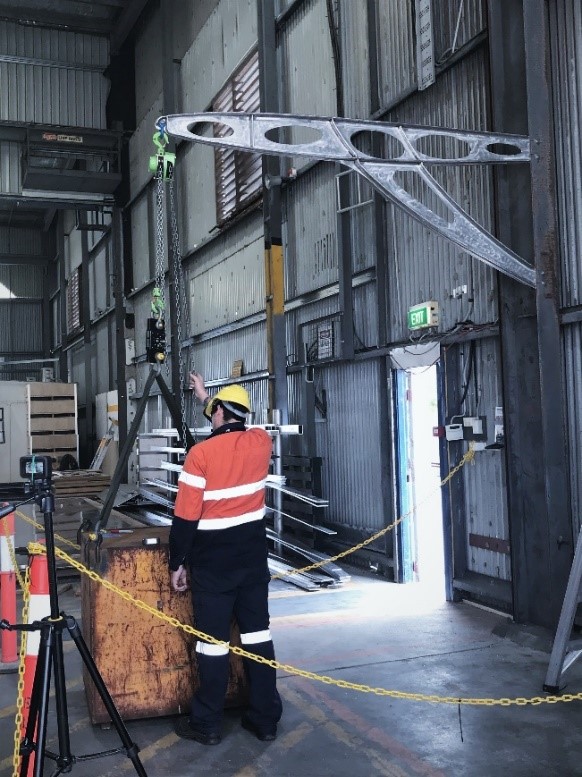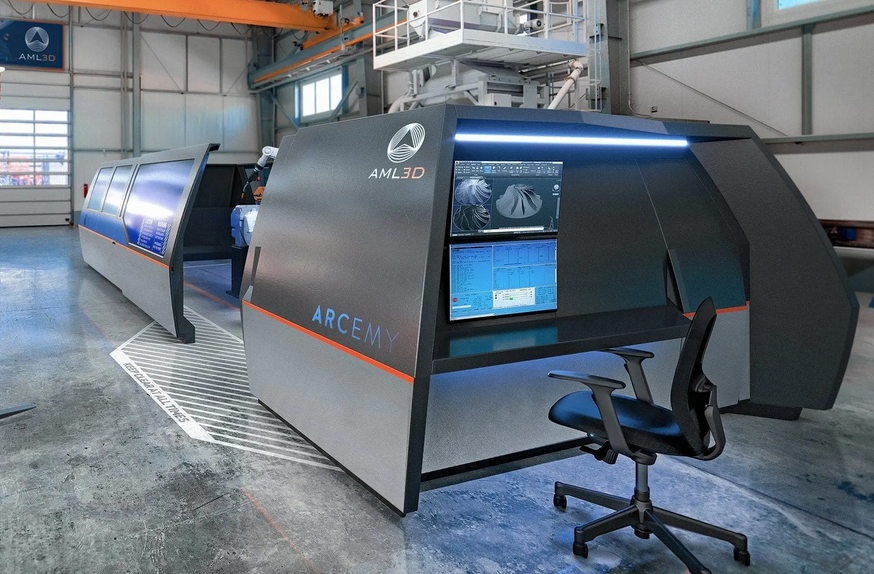The maritime sector is one of the more overlooked segments in 3D printing, with only a handful of companies really taking advantage of the opportunities there. A new business involved in 3D printing for naval uses has made itself known, Austal Australia, who, along with its partners, AML3D (ASX:AML) and Western Australia’s Curtin University, has 3D printed an aluminum personnel recovery davit. The device has been verified by DNV, the world’s largest classification society at its Global Additive Manufacturing Technology Centre of Excellence in Singapore.
According to international and naval specifications, Austal, AML3D and Curtin University produced a three-meter-long crane, also known as a davit, designed for personnel recovery. The assembly was then tested to support over two times its intended working load. This was followed by non-destructive and destructive testing. The testing process included microanalysis of the microstructure of the aluminum parts, with mechanical and corrosion properties compared to those of traditional marine grade materials.
The technology used to produce the components was wire arc additive manufacturing (WAAM) developed by AML3D. Claiming “the world’s largest certified” metal 3D printer, AML3D has achieved certifications, such as ISO 90012015, from a number of organizations, including Llyods Register, the American Welding Society, and the Singapore Accreditation Council. The startup is aiming to tackle such sectors as energy, mining and military with large-format metal 3D printing. Among the most recent projects set to use the technology was one from iKAD, who aimed to deploy it for manufacturing large metal pipes.
“Austal Australia has been working with AML3D since 2019 on the development of hybrid manufacturing approaches that put robotics side by side with our highly skilled tradesmen and women to fabricate large complex structures,” said Austal’s Chief Digital Officer, Andrew Malcolm. “Wire Arc Additive Manufacturing, or WAAM, has the potential to enable a productivity step change in shipbuilding, able to 3D print marine grade metal structures at a scale well beyond other commercially available metal 3D printing technologies. This DNV verification statement for the AM-produced personnel recovery davit shows that these additive manufacturing processes can meet our specification(s), which have been developed to fulfill the requirements to fit components to naval vessels, and we are certainly encouraged by the verification to pursue future opportunities.”
Outside of military development with national navy suppliers, Singapore is currently a hotbed for maritime 3D printing activity, with DNV providing the certification necessary for companies to deploy the technology in the area. So far, this pool of firms is limited to Wilhelmsen, Thyssen, and Wilhelmsen-backed startup Ivaldi. However, as Executive Editor Joris Peels has pointed out, 3D printing for the marine sector represents a potentially important and lucrative opportunity. This is in large part due to the need to obtain rare replacement parts for ships and other vessels that may be difficult to reach. 3D printing, obviously, offers the possibility of 3D printing spares on demand, but the remoteness of these facilities may prove difficult. The solution includes either producing these items at naval repair sites, onboard vessels themselves, or flying spares out to the point of need using drones.
Austal is a nearly $1 billion company with roughly 5,500 employees operating in Australia, the U.S., the Philippines, and Oman. Customers include a number of military and security forces, such as the Royal Australian Navy, Royal Navy of Oman, the United States Navy, the Australian Border Force, Condor Ferries, and Mols Linien of Denmark. Some of its vessels have been considered important developments in naval military technology, such as Littoral Combat Ships for the US Navy, which were first built with General Dynamics and then Lockheed Martin, as well as Expeditionary Fast Transport catamarans for the US military.
The fact that such a business, increasingly important to major naval forces, is adopting 3D printing lends further credence to the technology, while also reinforcing what we’ve already known, naval forces are starting to look to additive manufacturing as a means of producing parts. This crane assembly is only a first for AMl3D, which is expecting to deliver further proof of concepts in 2021.
Subscribe to Our Email Newsletter
Stay up-to-date on all the latest news from the 3D printing industry and receive information and offers from third party vendors.
Print Services
Upload your 3D Models and get them printed quickly and efficiently.
You May Also Like
Johns Hopkins University Researchers Develop HyFAM Technology
Two scientists from Johns Hopkins University, Nathan C. Brown and Jochen Mueller, have developed a hybrid manufacturing technology they call HyFam, or Hybrid Formative Additive Manufacturing. Their work on this technology...
3D Printing G-Code Gets an Upgrade: T-Code
Good old G-Code still manages many 3D printers, great and small. Just like the STL, it’s a standard that enables collaboration while also holding the additive manufacturing (AM) industry back....
AM Rewind: The Biggest News and Trends of 2024
After a sluggish 2023, driven by persistent inflation and geopolitical tensions, 2024 has seen some recovery. Economic growth climbed from about 2.8 percent in 2023 to a modest 3.2 percent...
Metal Wire 3D Printer OEM ValCUN Announces Plans for 2025 Expansion
ValCUN, a Belgian original equipment manufacturer (OEM) of wire-based metal additive manufacturing (AM) hardware, has announced that the company has entered the next phase of its growth trajectory, making key...



































